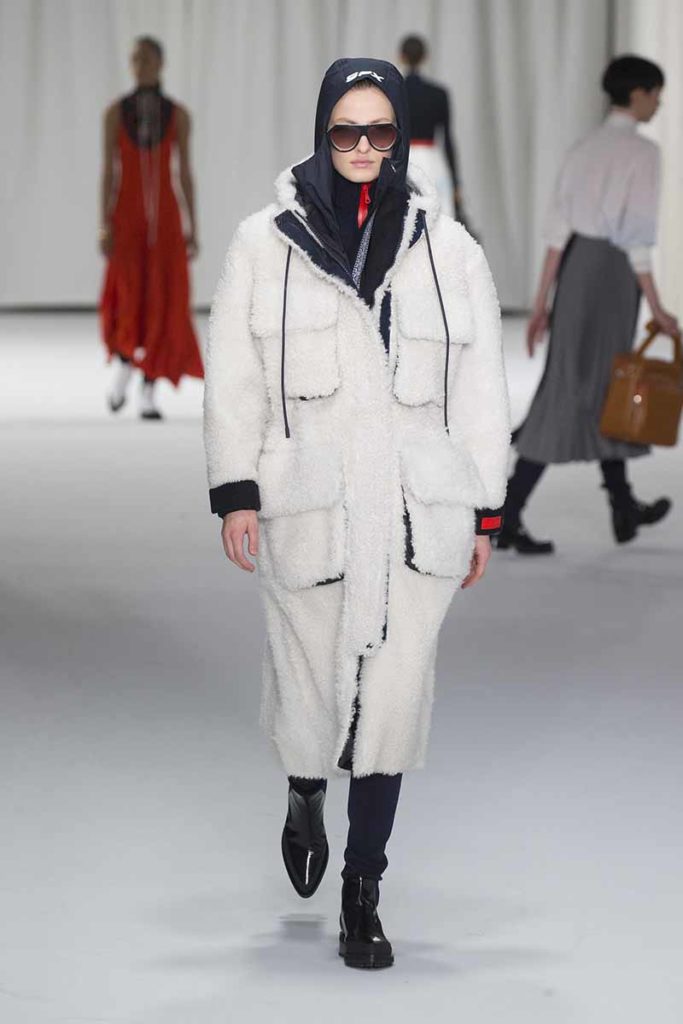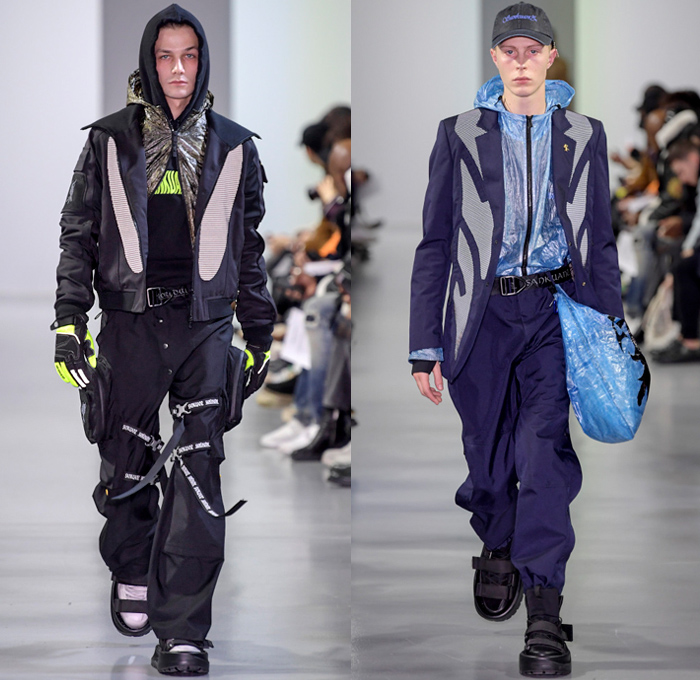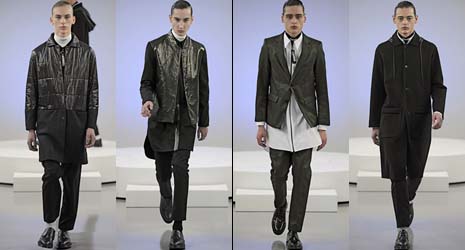High-tech fashion uses advances in science and technology to design and produce fashion products. Methods used in high-tech fashion borrow from technologies developed in the fields of chemistry, computer science, aerospace engineering, automotive engineering, architecture, industrial textiles, and competitive athletic wear.

High tech fashion (Image Courtesy : Fashion Windows Network)
Fashion projects an image of rapid change and forward thinking-a good environment for use of the latest technologies in production methods and materials. As technology becomes more integrated with one’s everyday life, its influence on the fashion one wears continues to increase.
Historic technological innovations such as the development of the sewing machine, the zipper, and synthetic fibers have influenced how garments are made, how they look, and how they perform. Elsa Schiaparelli was a noted designer of the 1930s and 1940s who had an eagerness to experiment with synthetic fibers. She introduced the first zipper to Paris couture. World events delayed advancements in techno fashions until the race for space began to influence designers in the 1960s. André Courrèges’s use of bonded jersey, Paco Rabanne’s experimentation with metal-linked garments, and Pierre Cardin’s pioneering vacuum-formed fabrics began to push the boundaries of fashion through experimentation with technology and innovative materials. Plastics, foam-laminated fabrics, metallic-coated fabrics, and a sleek fashion silhouette launched fashion into a new realm.

Image Courtesy : Denim Jeans observer.com
In contrast to the strong trend to use technological advances, a sentiment echoed by many designers worldwide is for a more balanced perspective. It is the belief that a design is enhanced by evidence of the hand that created it; thus imperfection, individuality, and an honest approach to materials is highly valued.

Image Courtesy : Fashion Fad
Fashion is a reflection of the times, and thus incorporates current scientific and technological developments. Change is a constant in fashion, and one can look forward to ever-developing advanced materials and methods and perhaps even new purposes for fashion.
